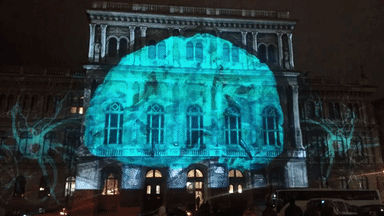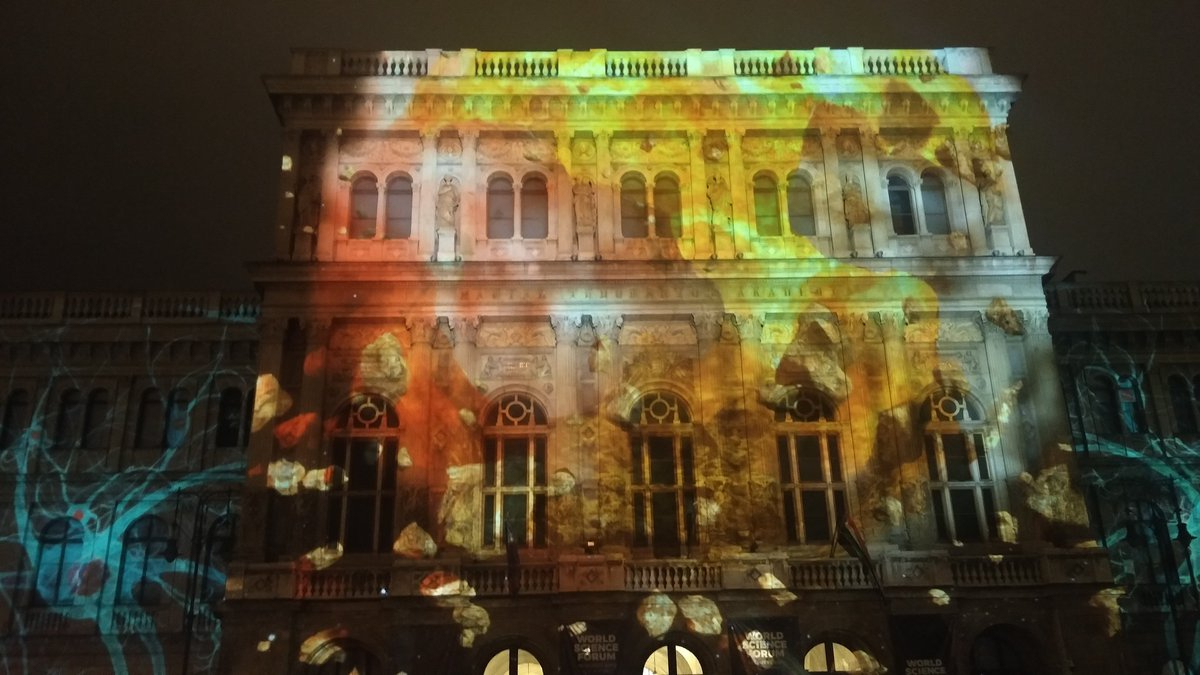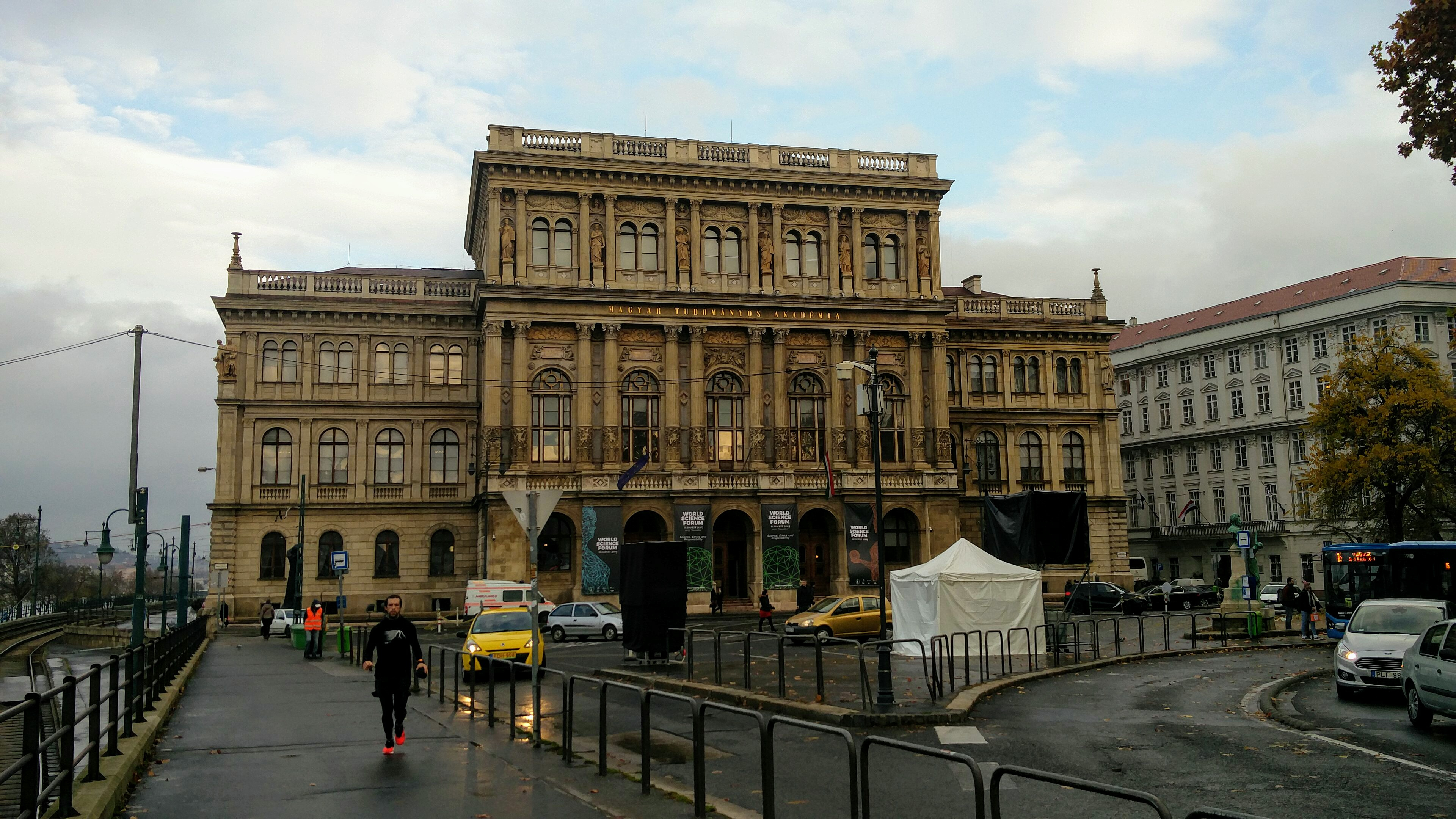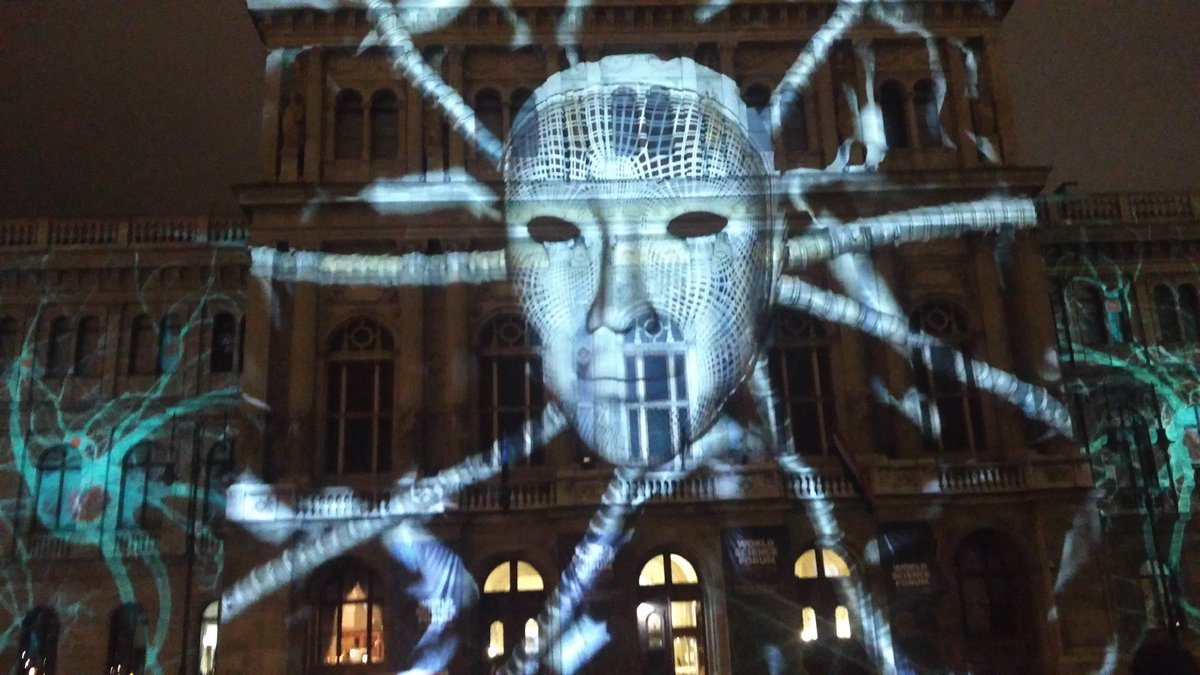
(Credit: Michael Voss/CGTN)
(Credit: Michael Voss/CGTN)
Street art is normally associated with painting, ranging from murals to graffiti. But in this high tech digital world, there is also room for sophisticated light projections and Hungary is producing some of the most cutting-edge work in that field.
The capital Budapest is famous for floodlighting its historic buildings every night. But one building recently underwent a unique transformation. To mark the hosting of the World Science Forum in November, the Academy of Science building became the façade for a state of the art digital light projection show, featuring scientific themes.
Once a night, the front of the building changed shape, the façade dissolving as it turned into a model of the Kepler space telescope. Planets would then appear before transforming into other shapes and themes, ranging from DNA spirals to viruses.
In all, the show lasted for 11 minutes, and repeated continually for several hours each night that the Science Forum was on. It's the work of one of Hungary's small high-tech studios.

(Credit: Michael Voss/CGTN)
(Credit: Michael Voss/CGTN)
Daniel Besnyo is co-founder of Centrum Productions in Budapest and was the project's artistic director. The process is called projection mapping and began with a 3D laser scan of the building.
"If we have the 3D model of the building we can make anything we want so we can rotate the building, we can make part of it, we can animate, we can stretch it.” Besnyo explained.
It's a small set-up with just 4 full time computer artists/animators working on screens in their Budapest office. For this project though they brought in ten extra people and still ended up working 16-hour days to get it all finished in time.
The €30,000 ($33,225) project was commissioned by the Hungarian Academy of Sciences and is just the latest in a series of similar digital projections the company has created across Europe. There are also five other high-tech studios in Hungary able to produce similar projects, one of which is on show every night during the festive season.
As Budapest gets into the Christmas spirit with its street markets and mulled wine, one of the attractions, locals and tourists alike, come to see every night is a Christmas themed light projection on historic St. Stephen's Basilica.

(Credit: Michael Voss/CGTN)
(Credit: Michael Voss/CGTN)
Traditional Street Art
Video projections may be a high tech 21st century form of urban art but Budapest is also well known for more traditional street art ranging from graffiti to giant murals. Some fill the ugly bare walls of car parks but giant murals can be seen on spare walls throughout the city. There are several themes ranging from cultural to historical and urban lifestyles. Advertisers have also started to take advantage.
Many of the murals are legal, paid for by local authorities or corporate interests. Tourists are now offered walking tours of the city's street art, including the graffiti.
Tamas Budha is an underground graffiti artist who invited us to see him at work. Budha graduated from art school and also earns a living painting the legal street murals but his first love is graffiti.
The artist told CGTN "The thing that interests me the most with graffiti is freedom. It gives me so much joy, nothing else gives me such freedom.”
He took me to an abandoned factory on an island in the Danube on the outskirts of Budapest. Its stark interior has become an unofficial graffiti gallery. Budha first used two cans of paint, red and yellow, to paint a background cover for his work. Then out came the spray cans.
He would outline the shapes he wanted to fill in but, not satisfied, he repainted over them and tried again until he liked what he saw. From low tech to high tech, urban art in all its forms is thriving in Budapest.

(Credit: Michael Voss/CGTN)
(Credit: Michael Voss/CGTN)